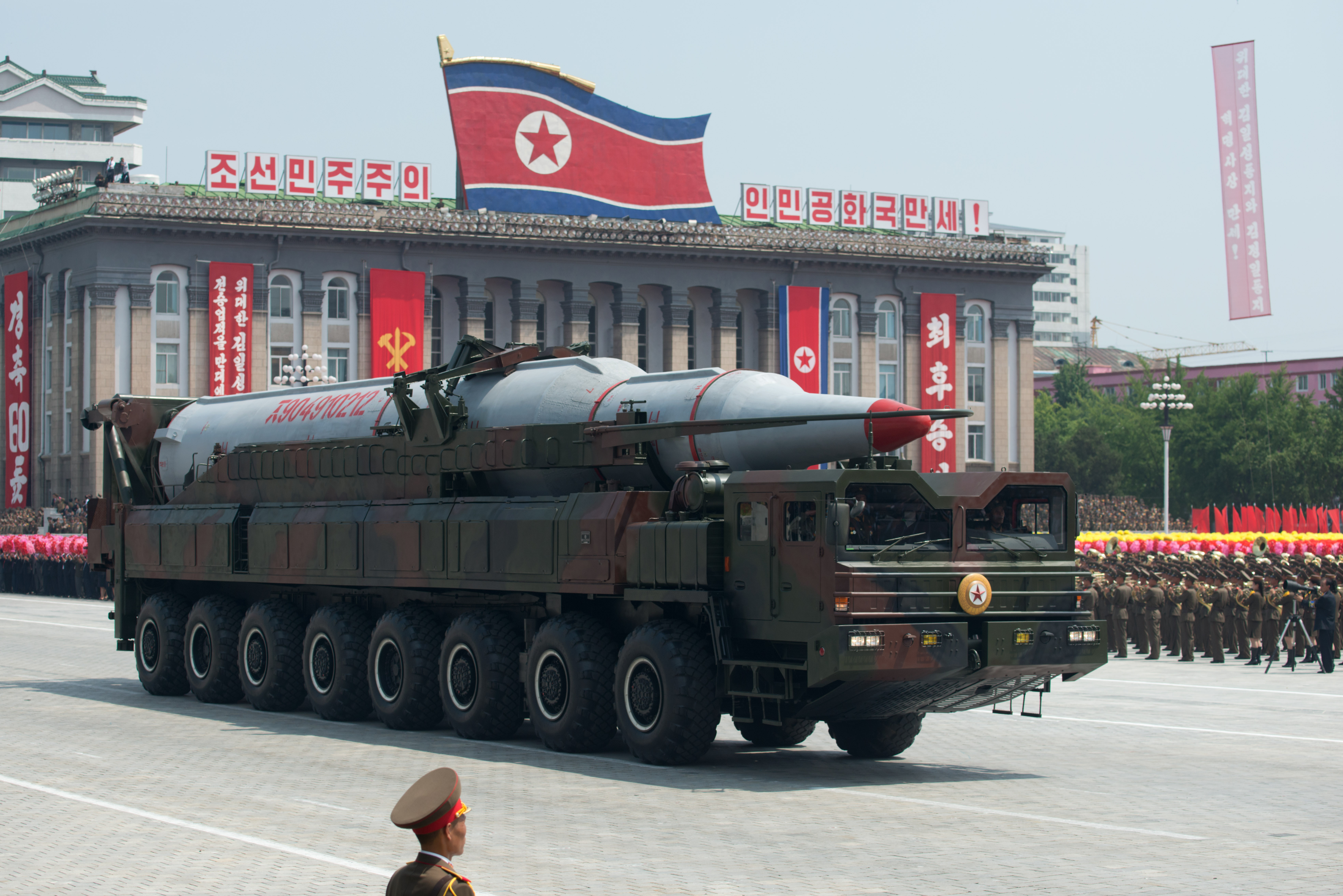Is nuclear Armageddon more likely than ever?
New weapons, unstable nations, and terrorism are raising the nuclear stakes. Is a doomsday attack more likely?

New weapons, unstable nations, and terrorism are raising the nuclear stakes. Is a doomsday attack more likely? Here's everything you need to know about the new nuclear arms race:
How many nuclear weapons are there?
About 16,000. Russia and the U.S. have 93 percent of them, with more than 7,000 each; the rest are split between France, China, the U.K., Pakistan, India, Israel, and North Korea. The global stockpile is much smaller than it was at the height of the Cold War: In 1986, Russia and the U.S. had 64,000 nukes pointed at each other — enough to devastate every square inch of the entire globe. But there are growing fears that nuclear catastrophe is becoming increasingly likely. The established nuclear powers are modernizing their arsenals with smaller, more sophisticated weapons. The unstable regime in nuclear-armed North Korea is trying to develop a hydrogen bomb. ISIS, which is richer and more ambitious than any previous terrorist group, is trying to get hold of a nuclear device. The Doomsday Clock, the symbolic countdown to Armageddon, was last year moved from five minutes to midnight to three minutes. "We are facing nuclear dangers today that are in fact more likely to erupt into a nuclear conflict than during the Cold War," says former Secretary of Defense William Perry.
The Week
Escape your echo chamber. Get the facts behind the news, plus analysis from multiple perspectives.

Sign up for The Week's Free Newsletters
From our morning news briefing to a weekly Good News Newsletter, get the best of The Week delivered directly to your inbox.
From our morning news briefing to a weekly Good News Newsletter, get the best of The Week delivered directly to your inbox.
What's the biggest worry?
Probably North Korea, since it's run by the erratic, belligerent dictator Kim Jong-Un. The Hermit Kingdom carried out its fourth nuclear test in January, and claimed it was a hydrogen bomb. Atomic bombs create their explosive energy solely through nuclear fission, while H-bombs rely on nuclear fusion, the same chain reaction that drives the Sun. This makes them vastly more powerful than atomic weapons: A-bombs tend to be measured in kilotons (equivalent to 1,000 tons of TNT); H-bombs in megatons (1 million tons of TNT). Nuclear scientists are unconvinced that North Korea's underground test was a thermonuclear weapon, based on the shock waves it produced. But the country is believed to have built a 10-kiloton atomic weapon — slightly smaller than the Hiroshima bomb, but enough to destroy a city. The regime already has the capability to strike South Korea, Japan, and other nearby countries with nuclear weapons; its recent launch of a satellite into orbit, which was widely seen as an intercontinental ballistic missile test, suggested that it could soon reach the U.S.
What are other powers doing?
Arming up. Russia's defense budget has increased by over 50 percent since 2007 — a third of it is devoted to nuclear weapons. China is increasing its warhead stocks and developing nuclear-armed submarines. Pakistan and India's own nuclear standoff shows no sign of cooling. President Obama, who in 2009 pledged to try to create a "world without nuclear weapons," has proposed spending $1 trillion over the next 30 years updating America's nuclear arsenal, replacing 12 nuclear-armed submarines, 450 land-based missiles, and hundreds of nuclear bombers. Some of the weapons in development are very controversial.
A free daily email with the biggest news stories of the day – and the best features from TheWeek.com
Why is that?
They're becoming smaller and more advanced, and thus more likely to be used. Last fall, the U.S. Air Force tested its first precision-guided atom bomb, which can be remotely guided like a cruise missile to zero in on small targets. Its explosive power can be dialed up or down, from 50 kilotons to 0.3 kilotons. Critics argue that nuclear weapons should never be used as battlefield weapons — only as a deterrent. "What going smaller does," says retired Gen. James Cartwright, "is make the weapon more thinkable." Russia's new weapons are also causing concerns. Last November, the Kremlin leaked plans for a nuclear torpedo designed to sneak under traditional nuclear defenses and hit cities or military installations along the coasts.
Could terrorists acquire a nuke?
It's possible. Between 1995 and 2012, the International Atomic Energy Agency catalogued 2,200 attempts to steal or smuggle uranium. ISIS's propaganda magazine has suggested buying a nuclear weapon in Pakistan and smuggling it into the U.S. Nuclear experts warn that an improvised device could be fitted into an SUV-size shipping container. Ports and airports are fitted with radiation sensors, but they only work at very close range. Another potential threat is a "dirty bomb" — a regular explosive device that would spray radioactive material over a blast zone, exposing thousands of people to radiation and turning an entire city into an uninhabitable ghost town. Authorities in Iraq are now searching for a sizable quantity of "highly dangerous" radioactive material stolen last year, which theoretically could wind up in the hands of ISIS.
Is a nuke-free world possible?
Not in the foreseeable future. Once rogue nations develop nuclear weapons, they're extremely unlikely to relinquish them. "The reason you attacked Afghanistan is because they don't have nukes," a North Korean diplomat told American negotiators in 2005. "That is why we will never give up ours." For similar reasons, none of the nine nuclear powers will surrender its weapons. The nuclear genie was let out of the bottle in Hiroshima in 1945, and it will probably never be forced back in.
Monitoring nuclear wannabes
Any nation seeking to develop nuclear weapons has to test them — and the good news is that it has become impossible to conduct a nuclear test in secret. With a huge network of seismic stations and underwater hydroacoustic centers, the international organization responsible for enforcing the ban on testing can detect and measure a nuclear explosion anywhere in the world. But uncovering the construction of a nuke is another matter. Satellites play a big part, but they're far from infallible. Syria hid a nuclear reactor by assembling it in a building with a lowered floor, which from the outside looked too small to house such a facility. (The reactor was discovered and destroyed by Israel in 2007, before it could be completed.) Once a program has been detected, advances in nuclear forensics — the analysis of air and soil for radioactive particles — have made it very hard to cover up previous activity. "You can detect individual atoms," says Andreas Persbo of Vertic, the international agreement verification think tank. "It's virtually impossible to hide that you've been doing nuclear activity in a room."
-
 Political cartoons for December 7
Political cartoons for December 7Cartoons Sunday’s political cartoons include the Trump-tanic, AI Santa, and the search for a moderate Republican
-
 Trump’s poll collapse: can he stop the slide?
Trump’s poll collapse: can he stop the slide?Talking Point President who promised to ease cost-of-living has found that US economic woes can’t be solved ‘via executive fiat’
-
 Codeword: December 7, 2025
Codeword: December 7, 2025The daily codeword puzzle from The Week
-
 Femicide: Italy’s newest crime
Femicide: Italy’s newest crimeThe Explainer Landmark law to criminalise murder of a woman as an ‘act of hatred’ or ‘subjugation’ but critics say Italy is still deeply patriarchal
-
 Brazil’s Bolsonaro behind bars after appeals run out
Brazil’s Bolsonaro behind bars after appeals run outSpeed Read He will serve 27 years in prison
-
 Americans traveling abroad face renewed criticism in the Trump era
Americans traveling abroad face renewed criticism in the Trump eraThe Explainer Some of Trump’s behavior has Americans being questioned
-
 Nigeria confused by Trump invasion threat
Nigeria confused by Trump invasion threatSpeed Read Trump has claimed the country is persecuting Christians
-
 Sanae Takaichi: Japan’s Iron Lady set to be the country’s first woman prime minister
Sanae Takaichi: Japan’s Iron Lady set to be the country’s first woman prime ministerIn the Spotlight Takaichi is a member of Japan’s conservative, nationalist Liberal Democratic Party
-
 Russia is ‘helping China’ prepare for an invasion of Taiwan
Russia is ‘helping China’ prepare for an invasion of TaiwanIn the Spotlight Russia is reportedly allowing China access to military training
-
 Interpol arrests hundreds in Africa-wide sextortion crackdown
Interpol arrests hundreds in Africa-wide sextortion crackdownIN THE SPOTLIGHT A series of stings disrupts major cybercrime operations as law enforcement estimates millions in losses from schemes designed to prey on lonely users
-
 China is silently expanding its influence in American cities
China is silently expanding its influence in American citiesUnder the Radar New York City and San Francisco, among others, have reportedly been targeted